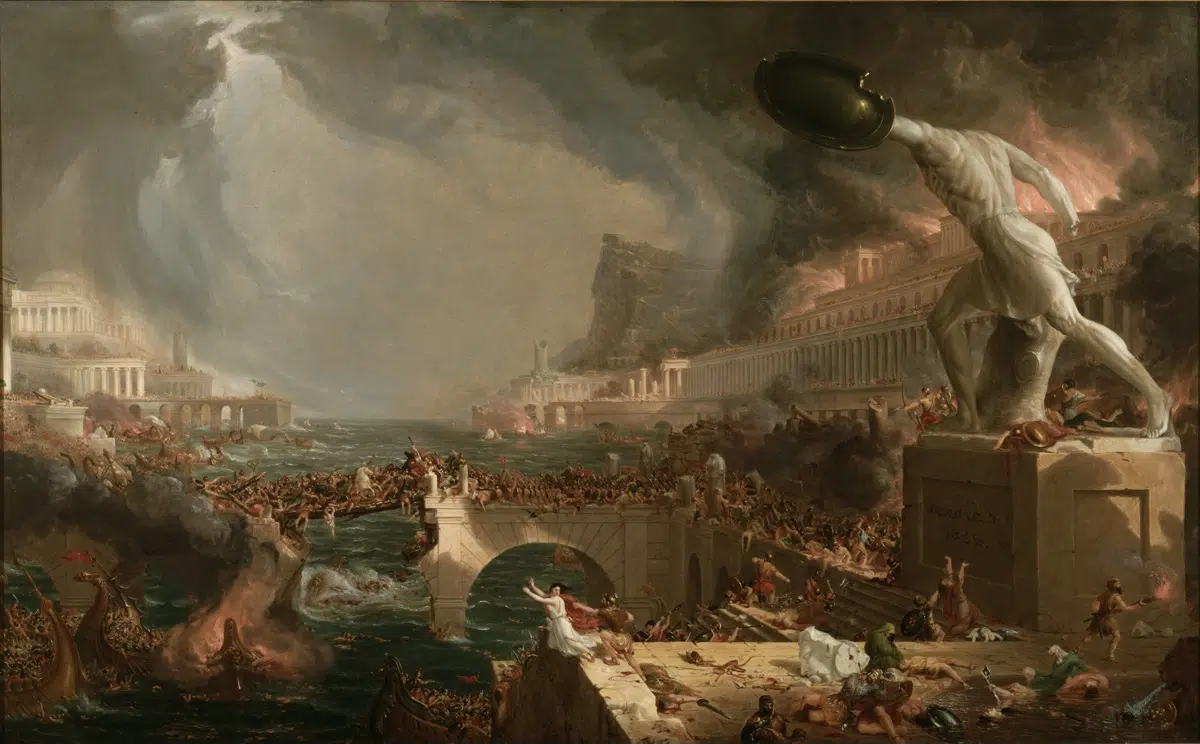
Determining which year in human history was the worst to be alive is subjective and there are many contenders for the top post.
Among them 2020 and the coronavirus pandemic that claimed the lives of millions of people and shut down whole countries. Periods marked by large-scale violence and atrocities like World War II are also contenders.
Further back 1918 was horrific when the Spanish Flu pandemic infected one-third of the global population, killing an estimated 50-100 million people. The 1347-1351 period was stigmatized with the Black Death pandemic that devastated Europe, killing an estimated 30-50 percent of the population.
Was 535 AD the worst year ever?
However many historians and scientists argue that the worst year to be alive was 536 AD due to a series of devastating events that plunged much of the world into chaos.
A massive volcanic eruption, or possibly a series of eruptions, shrouded the Northern Hemisphere in a veil of ash and dust. This blocked sunlight for an estimated 18 months, causing a dramatic drop in global temperatures. This phenomenon is known as the volcanic winter of 536.
The plummeting temperatures led to widespread crop failures. With crops unable to grow, people faced starvation across Europe, the Middle East, and parts of Asia.
Weakened by hunger and harsh conditions, populations became more susceptible to disease. The Plague of Justinian, believed to be bubonic plague, emerged in 541 AD and devastated the Eastern Roman Empire, further worsening the situation.
These events had a ripple effect, impacting societies for years to come. The famine and disease caused widespread death and social disruption. The volcanic winter ushered in a period of cold weather known as the Late Antique Little Ice Age, which lasted until around 560 AD.
Medieval historian Michael McCormick from Harvard University said recently that 536 “was the beginning of one of the worst periods to be alive, if not the worst year.”
“For the sun gave forth its light without brightness, like the moon, during the whole year,” wrote Byzantine historian Procopius.
Temperatures in the summer of 536 fell 1.5°C to 2.5°C, initiating the coldest decade in the past 2300 years. Snow fell that summer in China; crops failed; and people starved. The Irish chronicles record “a failure of bread from the years 536–539.”
Then, in 541, bubonic plague struck the Roman port of Pelusium, in Egypt. What came to be called the Plague of Justinian spread rapidly, wiping out one-third to one-half of the population of the eastern Roman Empire and hastening its collapse, McCormick told Science magazine.
Massive volcanic eruptions in Europe and North America
McCormick’s team reported that a cataclysmic volcanic eruption in Iceland spewed ash across the Northern Hemisphere early in 536. Two other massive eruptions followed, in 540 and 547. The repeated blows, followed by plague, plunged Europe into economic stagnation that lasted until 640.
A research team led by Michael Sigl of the University of Bern, found recently that nearly every unusually cold summer over the past 2500 years was preceded by a volcanic eruption.
A massive eruption—perhaps in North America, the team suggested—stood out in late 535 or early 536; another followed in 540. Sigl’s team concluded that the double blow explained the prolonged dark and cold.
See all the latest news from Greece and the world at Greekreporter.com. Contact our newsroom to report an update or send your story, photos and videos. Follow GR on Google News and subscribe here to our daily email!



